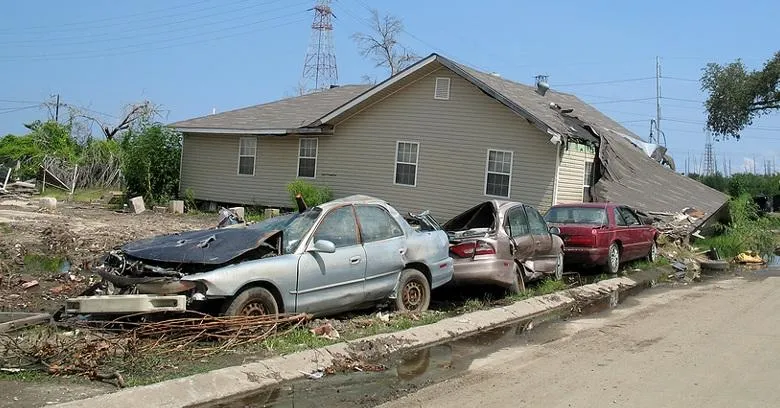According to a recent survey, homeowners renewing their insurance are experiencing insurance premium increases of more than 20%, making housing even more expensive for a rising number of Americans.
Climate change has fundamentally increased risks and costs for insurers and homeowners alike. Left unchecked, insurance will become unaffordable for many precisely when coverage is needed most. Through proactive policies, governments must promote climate resilience while balancing the financial solvency of insurers. Affordable access to disaster risk protection needs to be part of national and regional climate adaptation plans.
Insurance companies are raising the cost of homeowner’s insurance premiums as a way to offset the increased risk of expensive property damage that is expected to result from climate change-exacerbated weather events and natural disasters. Homeowners especially in high-risk regions are having to pay more for coverage.
Florida witnessed the biggest surge, with insurance premiums rising by 35%, according to the report by Policygenius. Homeowners are forced to devote a larger portion of their income to housing expenses each month as a result of the sharp rises in homeowner’s insurance costs.
As climate change leads to more frequent and costly natural disasters and property damage, insurance companies are raising premiums on homeowner’s insurance to account for the increased risk and likelihood of claims they will have to pay out. Places more prone to natural disasters like floods, hurricanes, fires, etc. are likely to see the largest increases in insurance rates.

The danger of natural disasters increases insurance premiums
Climate change is exacerbating natural disasters like wildfires, floods, hurricanes, and heat waves around the world. As these extreme weather events become more frequent and severe, the costs of property damage and insurance claims have risen dramatically. Insurance companies have responded by hiking up premiums, especially for homeowners in high-risk areas.
State Farm cited wildfire risk and construction costs as the reasons they were unable to make a profit in California when they stopped selling new policies there. Hurricane risk was cited by Farmers Insurance as the reason for leaving Florida as well as California. Many homeowners and homebuyers will probably lose coverage or have to pay more for insurance if the severity and frequency of natural catastrophes increase due to climate change.
Insurers calculate premiums based on risk – as the likelihood of climate-related disasters damaging homes increases, they must increase prices to account for the projected higher payouts. Devastating disasters like flooding from hurricanes, wind damage from tornadoes, and fires from drought and heat are becoming the “new normal” rather than rare events. With each year of more extreme weather, insurers recalculate probabilities and raise insurance premiums.
Regions most vulnerable to specific dangers are hit hardest with cost increases. Homeowners living in coastal areas see steep hikes in flood or hurricane insurance. Inland areas near forests see rises in fire insurance premiums. And prices for all types of coverage are rising faster than wages, pricing many out of the market. Insurance providers themselves also face financial risks if claims exceed projections.
To cope with unaffordable insurance premiums, many homeowners are being forced to simply go without coverage, shouldering all the risk themselves. However, most cannot bear costs in the hundreds of thousands of dollars if their house burns down or gets destroyed in a hurricane. The aftermath of major disasters often includes many homeowners going bankrupt or homeless.
While altitude, construction, and disaster mitigation are becoming bigger factors, climate-linked disadvantages can decrease desirability. Homes near drought-prone wooded areas or at risk of erosion from rising seas may suffer depressed demand and lagging sales. Ongoing costs like insurance, maintenance, and utilities rise for vulnerable houses.
Houses with fewer climate hazards are preferred by homebuyers
The impacts of climate change are shifting homebuyer preferences as the risks of flooding, wildfires, storms, and other disasters rise. More and more, prospective homeowners are factoring in climate hazards when deciding where and what kind of house to purchase. This has created a market incentive for lower-risk properties.
Home insurance costs are also driving preferences. As insurers raise premiums for high-risk homes, affordable policies lead buyers toward properties less vulnerable to disasters that damage or destroy houses. Government flood maps highlighting zones expected to be inundated influence decisions.

Houses with the biggest increases in insurance rates will probably see less price growth than comparable homes with steady insurance premiums. Properties where the likelihood of a wildfire, flood, storm, or other natural disaster is rising will lose some of their appeal to buyers who prefer properties with lower insurance costs and climatic hazards.
Homes with installed protections like hurricane shutters, fire-resistant roofing and siding, emergency water storage, and backup power generation are more attractive to buyers focused on climate resilience. Proximity to fire and police stations also provide security. When climate hazards loom larger, preparedness matters more.
Home buyers who have access to flood risk information make offers on properties with reduced risk, according to a Redfin experiment. Prior to the trial, Redfin users who saw homes with severe and/or extreme flood risk made bids on homes with 54% less risk than users who were not shown the risk data. Redfin users were most likely to click into the flood-risk section of home listings in flood-prone Cape Coral, Florida, Houston, Texas, and Baton Rouge, Louisiana.
As buyers evaluate long-term climate risks beyond the life of a 30-year mortgage, behavior changes. Instead of simple amenities, sustainable durability and resilience to disasters gain priority. This extends to community-level features like robust drainage systems and early wildfire warning protocols as well.
Shifting homebuyer preferences signal that climate adaptation is an economic, not just environmental, concern. As climate hazards grow, the real estate mantra “location, location, location” increasingly means locations outside floodplains, on high ground, distant from forests, designed for resilience. Homes that mitigate climate risks offer more value. The market is responding to escalating impacts.
Without government help, the affordability of housing will deteriorate.
Although purchasers choose houses that are not vulnerable to natural calamities, affordability is still their top priority. This explains why buyers from pricey locations like New York and Los Angeles continue to relocate to Florida, which offers reasonably priced properties and cheap taxes, despite the state being prone to natural disasters.
On average, during the past two years, 60,000 people have moved to Lee County, Florida, which includes Fort Myers and Cape Coral and was severely damaged by Hurricane Ian last September. Yet, Florida areas like Cape Coral might lose their appeal to purchasers now that the cost of insurance premiums there has climbed 35% in only one year.
We already have a shortage of affordable housing in the United States, and rising home insurance costs will worsen the problem. Local and state governments must prioritize building resilient housing in places with low disaster risks and insurance costs. Delaying action will only make the consequences of climate change costlier.
As climate change leads to more frequent and severe weather events like flooding, hurricanes, and wildfires, insurance premiums for homeowners in affected areas are skyrocketing. However, governments have several options to help stabilize or reduce these premiums to maintain affordable coverage for residents.
A key strategy is for the government to subsidize a national flood insurance program that spreads risk more evenly across geographic regions and demographics. By having taxpayers collectively share the cost of insuring high-risk flood zones, insurance premiums can remain reasonable for homeowners even in flood-prone areas. The government can also establish an insurance pool funded by taxes or fees that enables higher risk properties to get coverage at a lower shared cost rather than each homeowner bearing the full expensive premium.
Regulations and building codes are another important lever – mandating resilient construction materials, elevated foundations, storm shutters, fire-resistant roofs, and other techniques to mitigate damage can substantially lower risks and justify reducing insurance rates. Government grants and tax incentives can further encourage homeowners to invest in mitigation upgrades that then limit the exposure of insurers.
Infrastructure projects like seawalls, levees, drainage ditches, and flood control dams also play a role in risk reduction. When the government invests to prevent hazards like flooding from reaching communities to begin with, insurers can justifiably lower premiums. Additionally, accurate flood zone mapping provides clarity to insurers on real risks so they don’t need to over-estimate insurance premiums.
Capping rate increases, offering low-interest loans for mitigation, subsidizing policies for lower-income residents, and establishing reinsurance programs or disaster funds can additionally promote premium stability. Similarly, governments can buy out severely at-risk properties and prohibit rebuilding in dangerously flood/fire-prone areas.
Combining incentives, strategic infrastructure, sound regulations, targeted financial assistance, and access to government-subsidized insurance allows for affordable and available coverage, even in regions facing intensifying climate hazards. It is incumbent on governments to take action to manage climate risks and promote equitable access to insurance rather than allowing unconstrained market forces to price many out of coverage.
Home insurance provides financial protection against unexpected damages or losses to your property, whether due to natural disasters, theft, or accidents. When selecting a policy, it’s important to assess your specific needs and choose anything suitable that aligns with the value of your home and belongings. This ensures you’re not underinsured or paying for unnecessary extras, giving you peace of mind in knowing you’re properly covered.









